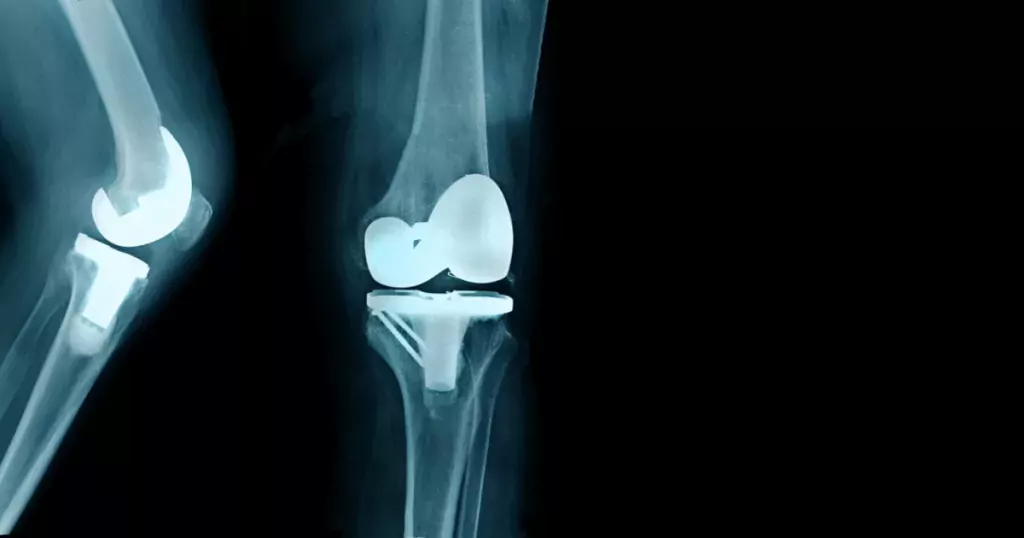Knee Fracture In Nagpur

Knee Fracture In Nagpur
A knee fracture refers to a break in one or more of the bones that make up the knee joint, including the femur (thigh bone), tibia (shin bone), or patella (kneecap). Knee fractures can result from trauma, such as falls, car accidents, or sports injuries, and can range from mild to severe. When a knee fracture occurs, it may affect the bones, surrounding ligaments, or even the joint itself, leading to pain, swelling, and difficulty moving the knee.
Types of Knee Fractures
Knee fractures can be classified into several types based on the bone affected and the severity of the fracture:
- Femoral Fracture: A break in the femur near the knee joint, often due to high-impact trauma.
- Tibial Fracture: A fracture in the tibia (shin bone), which can occur from falls or direct blows to the knee.
- Patellar Fracture: A break in the patella (kneecap), which may result from a direct hit or fall onto the knee.
- Fracture-Dislocation: A complex injury where the bones are fractured, and the knee joint becomes dislocated, making treatment more challenging.
Causes of Knee Fractures
Knee fractures often occur as a result of trauma or high-impact forces, such as:
- Sports Injuries: High-contact sports like football, soccer, or basketball can lead to knee fractures from collisions or falls.
- Car Accidents: The force of a car crash can cause significant knee injuries, including fractures.
- Falls: Falling onto the knee from a height or a sudden fall can result in fractures, especially in older adults with weakened bones.
- Osteoporosis: In individuals with weakened bones, even minor falls can lead to fractures.
Symptoms of Knee Fractures
The symptoms of a knee fracture can vary depending on the severity of the injury. Common signs include:
- Severe pain in the knee area, especially when moving or bearing weight.
- Swelling around the knee joint.
- Bruising or visible deformity in the knee.
- Difficulty bending or straightening the knee.
- Inability to bear weight on the affected leg.
Diagnosis of Knee Fractures
To diagnose a knee fracture, your doctor will conduct a physical exam and may order imaging tests, such as:
- X-rays: The most common and effective imaging tool for diagnosing knee fractures and determining the extent of the damage.
- CT Scans: In more complex fractures, a CT scan may be used to get a detailed view of the bone structure.
- MRI: If there is concern about damage to the soft tissues, ligaments, or cartilage surrounding the knee, an MRI may be recommended.
Treatment Options for Knee Fractures
The treatment for a knee fracture depends on the type and severity of the fracture. Options include:
- Non-Surgical Treatment:
- Casting or Splinting: For mild fractures that are not displaced (bones remain in their correct position), your doctor may recommend immobilizing the knee with a cast or splint to allow the bones to heal.
- Rest, Ice, Compression, Elevation (R.I.C.E.): These methods can help reduce pain and swelling.
- Pain Relief: Over-the-counter pain medications like ibuprofen or acetaminophen may be recommended to manage pain and inflammation.
- Surgical Treatment:
- Internal Fixation: If the fracture is displaced or complex, surgery may be required to realign the bones and secure them with screws, plates, or rods.
- Patella Fracture Surgery: In the case of a broken kneecap, surgery may be necessary to reassemble the pieces of the patella and stabilize the bone.
- Joint Replacement: In severe cases where the knee joint is badly damaged, partial or total knee replacement may be necessary.
Recovery from a Knee Fracture
Recovery from a knee fracture depends on the severity of the injury, the treatment used, and the individual’s overall health. General steps in recovery include:
- Rest and Rehabilitation: After surgery or immobilization, physical therapy will play a critical role in restoring strength, flexibility, and range of motion to the knee joint.
- Weight-Bearing: Your doctor will guide you on when it is safe to begin bearing weight on the affected leg, which is typically a gradual process.
- Recovery Timeline: For non-surgical fractures, recovery can take 6-8 weeks, while fractures requiring surgery may take several months to heal fully.
Potential Complications of Knee Fractures
While most knee fractures heal successfully, there can be complications, including:
- Infection: This is especially a risk if surgery is involved.
- Joint Stiffness: Some individuals may experience limited range of motion in the knee after healing.
- Post-Traumatic Arthritis: A knee fracture can increase the risk of developing arthritis in the joint over time.
- Delayed Healing: In some cases, fractures may take longer than expected to heal.
Preventing Knee Fractures
While some knee fractures are caused by accidents that cannot be prevented, there are steps you can take to reduce your risk:
- Strengthening Exercises: Focus on strengthening the muscles around your knee to provide better support.
- Bone Health: Ensure you are getting enough calcium and vitamin D to maintain healthy bones, especially as you age.
- Use Protective Gear: In sports, wear appropriate gear like knee pads to reduce the risk of injury.
